摘要: In this article we’re going to take a look at the 3 most common loss functions for Machine Learning Regression. I’ll explain how they work, their pros and cons, and how they can be most effectively applied when training regression models.
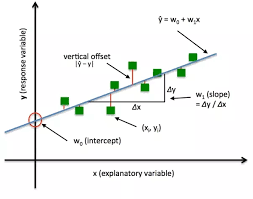
A loss function in Machine Learning is a measure of how accurately your ML model is able to predict the expected outcome i.e the ground truth.
The loss function will take two items as input: the output value of our model and the ground truth expected value. The output of the loss function is called the loss which is a measure of how well our model did at predicting the outcome.
A high value for the loss means our model performed very poorly. A low value for the loss means our model performed very well.
Selection of the proper loss function is critical for training an accurate model. Certain loss functions will have certain properties and help your model learn in a specific way. Some may put more weight on outliers, others on the majority.
In this article we’re going to take a look at the 3 most common loss functions for Machine Learning Regression. I’ll explain how they work, their pros and cons, and how they can be most effectively applied when training regression models.
Mean Squared Error (MSE)
The Mean Squared Error (MSE) is perhaps the simplest and most common loss function, often taught in introductory Machine Learning courses. To calculate the MSE, you take the difference between your model’s predictions and the ground truth, square it, and average it out across the whole dataset.
The MSE will never be negative, since we are always squaring the errors. The MSE is formally defined by the following equation:
Where N is the number of samples we are testing against. The code is simple enough, we can write it in plain numpy and plot it using matplotlib:
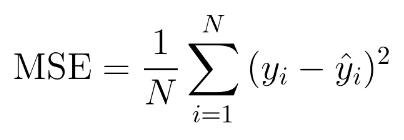
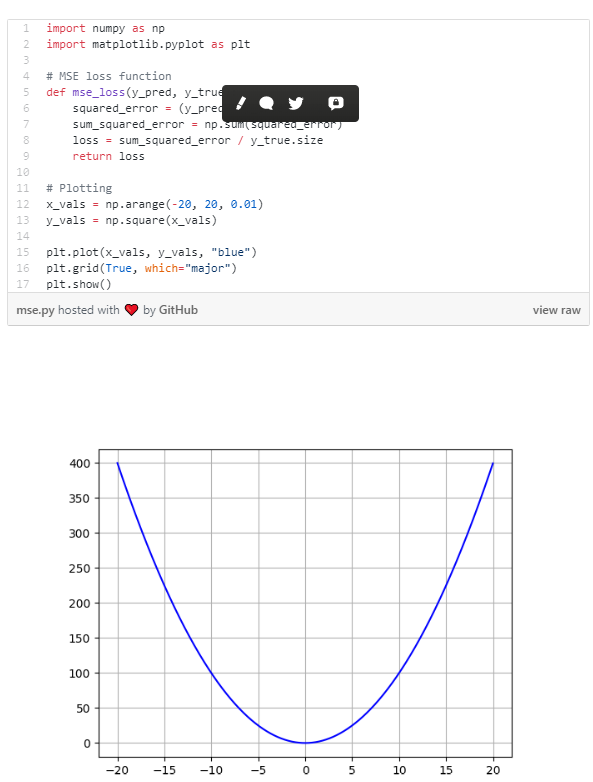
Advantage: The MSE is great for ensuring that our trained model has no outlier predictions with huge errors, since the MSE puts larger weight on theses errors due to the squaring part of the function.
Disadvantage: If our model makes a single very bad prediction, the squaring part of the function magnifies the error. Yet in many practical cases we don’t care much about these outliers and are aiming for more of a well-rounded model that performs good enough on the majority.
Mean Absolute Error (MAE)
The Mean Absolute Error (MAE) is only slightly different in definition from the MSE, but interestingly provides almost exactly opposite properties! To calculate the MAE, you take the difference between your model’s predictions and the ground truth, apply the absolute value to that difference, and then average it out across the whole dataset.
The MAE, like the MSE, will never be negative since in this case we are always taking the absolute value of the errors. The MAE is formally defined by the following equation:

Once again our code is super easy in Python! We can write it in plain numpy and plot it using matplotlib. This time we’ll plot it in red right on top of the MSE to see how they compare.
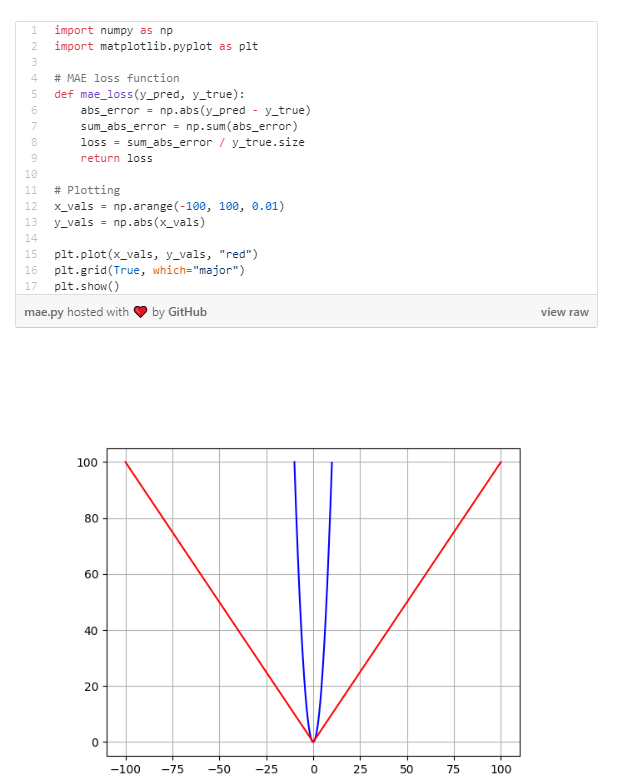
Advantage: The beauty of the MAE is that its advantage directly covers the MSE disadvantage. Since we are taking the absolute value, all of the errors will be weighted on the same linear scale. Thus, unlike the MSE, we won’t be putting too much weight on our outliers and our loss function provides a generic and even measure of how well our model is performing.
Disadvantage: If we do in fact care about the outlier predictions of our model, then the MAE won’t be as effective. The large errors coming from the outliers end up being weighted the exact same as lower errors. This might results in our model being great most of the time, but making a few very poor predictions every so-often.
Huber Loss
Now we know that the MSE is great for learning outliers while the MAE is great for ignoring them. But what about something in the middle?
Consider an example where we have a dataset of 100 values we would like our model to be trained to predict. Out of all that data, 25% of the expected values are 5 while the other 75% are 10.
An MSE loss wouldn’t quite do the trick, since we don’t really have “outliers”; 25% is by no means a small fraction. On the other hand we don’t necessarily want to weight that 25% too low with an MAE. Those values of 5 aren’t close to the median (10 — since 75% of the points have a value of 10), but they’re also not really outliers.
Our solution?
The Huber Loss Function.
The Huber Loss offers the best of both worlds by balancing the MSE and MAE together. We can define it using the following piecewise function:

What this equation essentially says is: for loss values less than delta, use the MSE; for loss values greater than delta, use the MAE. This effectively combines the best of both worlds from the two loss functions!
Using the MAE for larger loss values mitigates the weight that we put on outliers so that we still get a well-rounded model. At the same time we use the MSE for the smaller loss values to maintain a quadratic function near the centre.
This has the effect of magnifying the loss values as long as they are greater than 1. Once the loss for those data points dips below 1, the quadratic function down-weights them to focus the training on the higher-error data points.
Check out the code below for the Huber Loss Function. We also plot the Huber Loss beside the MSE and MAE to compare the difference.
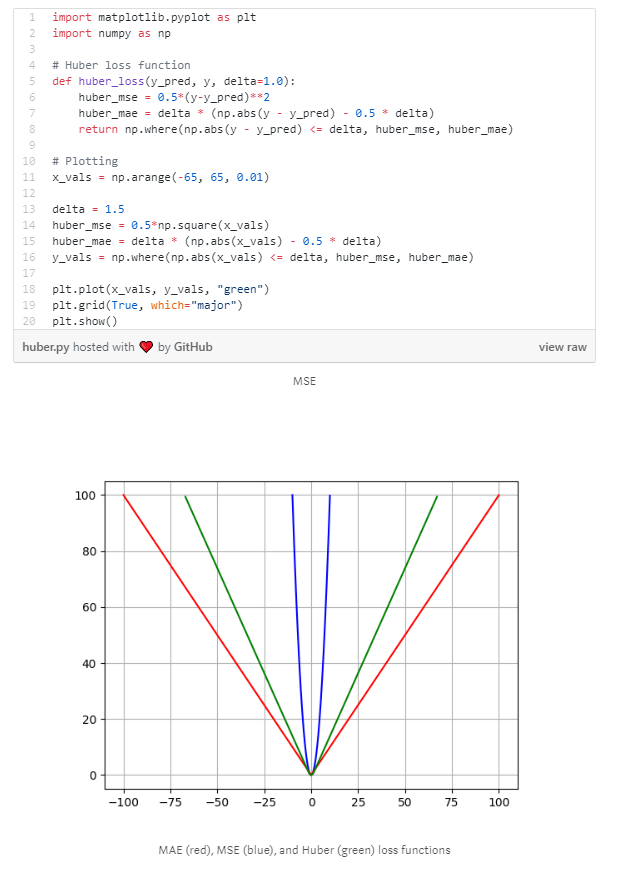
Notice how we’re able to get the Huber loss right in-between the MSE and MAE.
Best of both worlds!
You’ll want to use the Huber loss any time you feel that you need a balance between giving outliers some weight, but not too much. For cases where outliers are very important to you, use the MSE! For cases where you don’t care at all about the outliers, use the MAE!
轉貼自: Towards Data Science
若喜歡本文,請關注我們的臉書 Please Like our Facebook Page: Big Data In Finance


留下你的回應
以訪客張貼回應